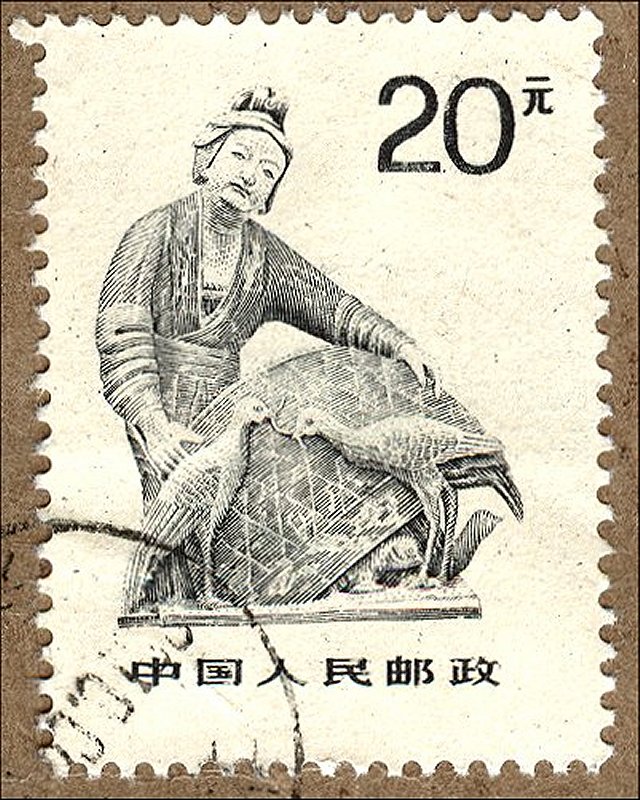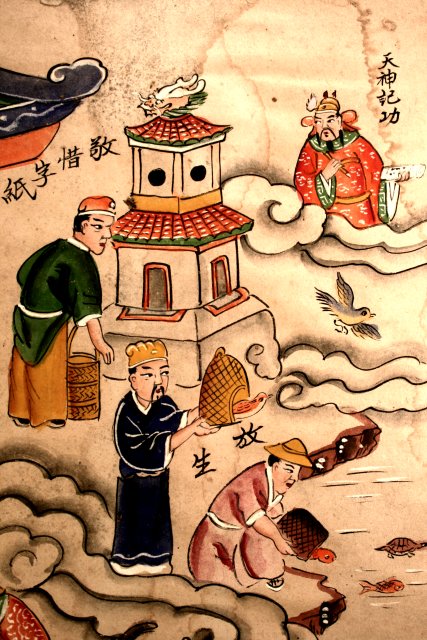
Translations
- The spirit of heaven records merits.
- Respectful concern over paper with written texts on it.
- Releasing live [animals]
The written character has long had a sacral element associated with it, from its semi-pictographic origins that is itself the bones of a thing and not just the representation of a thing, to its calligraphic expressions and talismanic manifestations. Even ordinary writing could be perceived as sacred, as John Kieschnick highlights in "The impact of Buddhism on Chinese material culture":
To turn to another potential offshoot of Buddhist book lore, in late imperial China, many held to a popular belief that all paper containing writing was supernaturally powerful. Many Chinese today can still recall parental warnings not to step on printed sheets of paper, which was thought to bring misfortune. Others believed that merit could be gained by collecting bits of paper containing writing -- any writing -- off the street. This belief has not been properly studied, but it seems likely that attitudes toward Buddhist scriptures played at least some role in its formation and development.
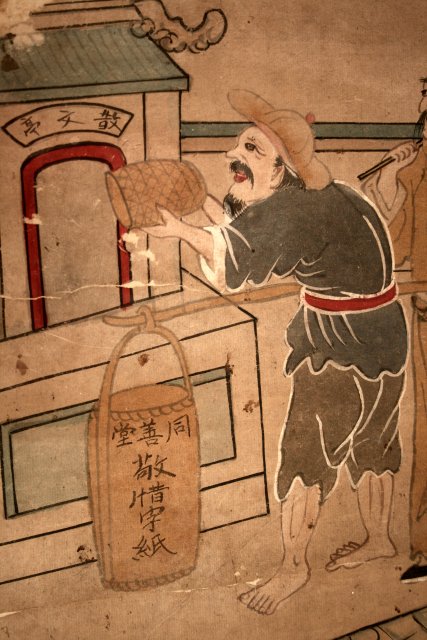
A second example of ritually burning the written word from another hell scroll (S14).
According to Wolfram Eberhard's Guilt and sin in traditional China (p. 72), "severe punishments are promised persons who "do not honor paper," which means printed paper. This can mean simply to throw printed paper away (instead of burning it in special ovens provided in the temples), or to step upon paper, to use it for Chinese windows (which, in earlier times, were always made of paper instead of glass), or even to use printed paper as toilet paper."
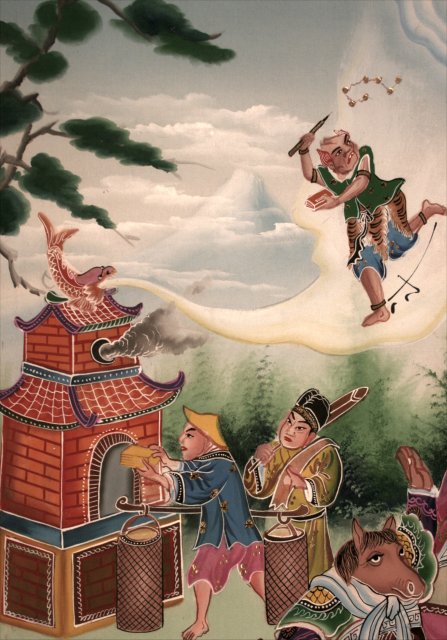
A third example of ritually burning the written word from another hell scroll (E3).
Note the presence of Kuixing (who is associated with the Wenchang constellation).
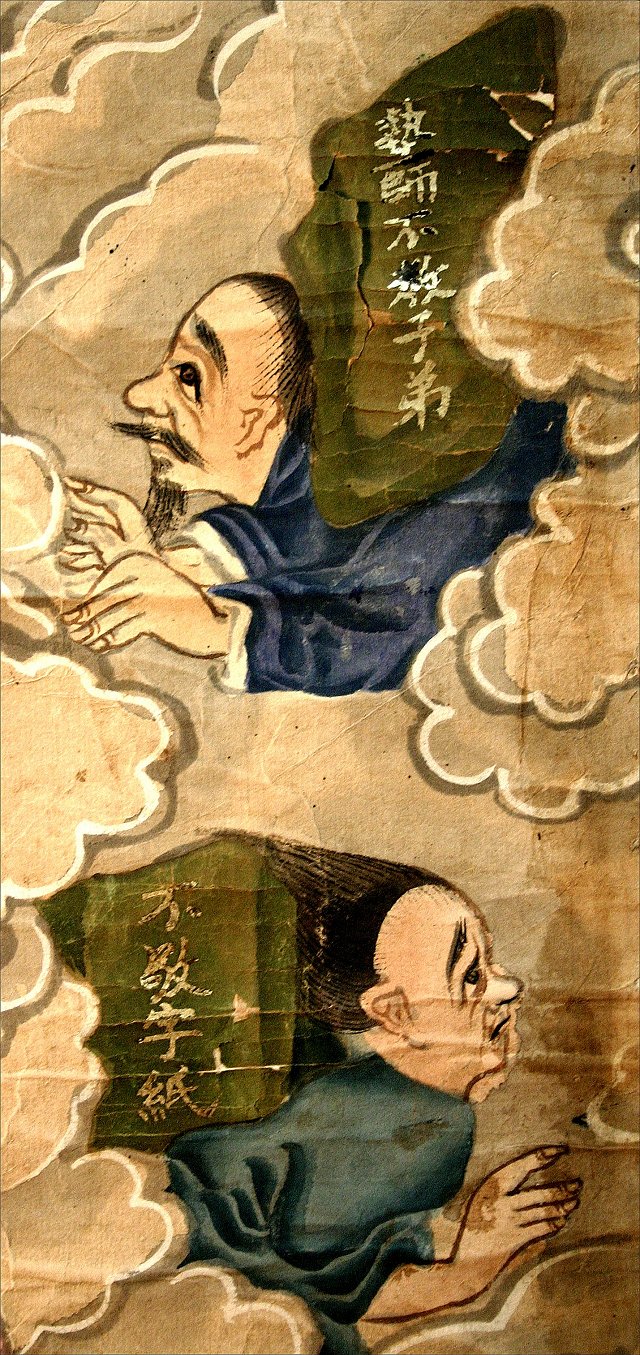
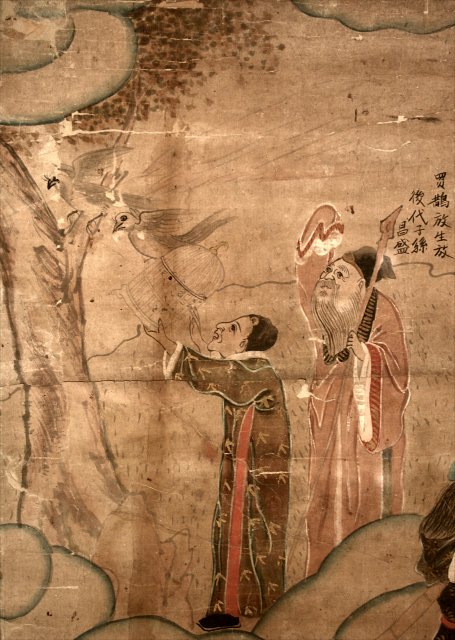
A second example of releasing animals found on another hell scroll (S16).
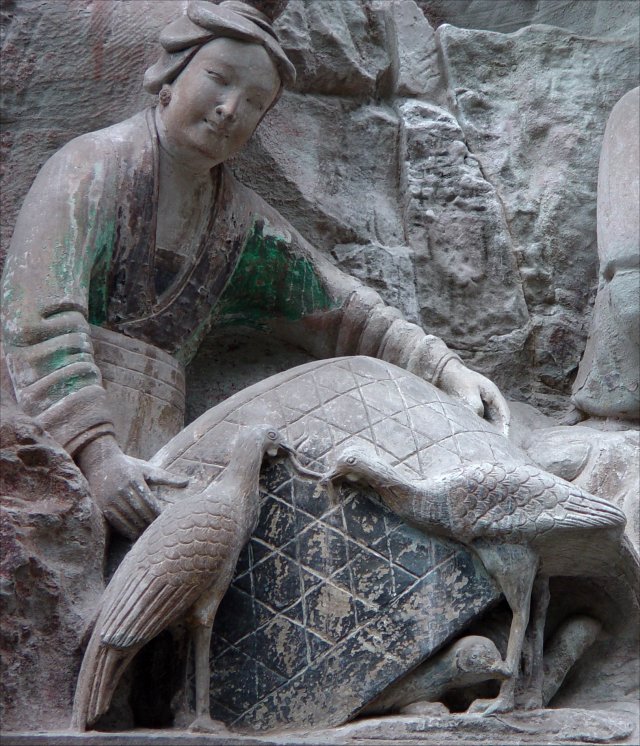
Releasing animals as depicted at the
Dazu Rock Carvings.
(Scholars interpret this scene to be the crime of raising animals for eating, but I have never seen that act depicted in hell art.
It is more likely this oft-depicted merit of releasing domestic animals.)
